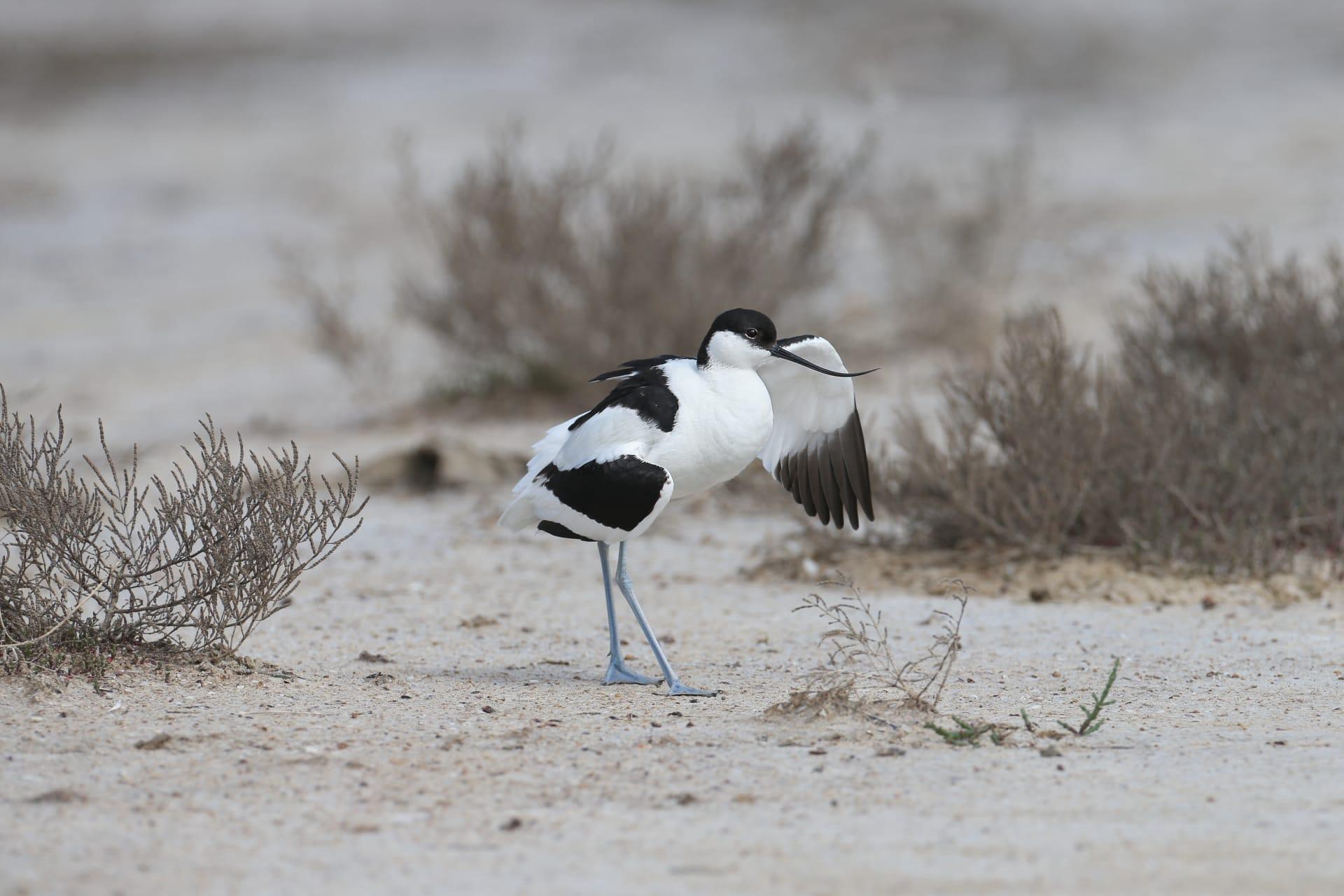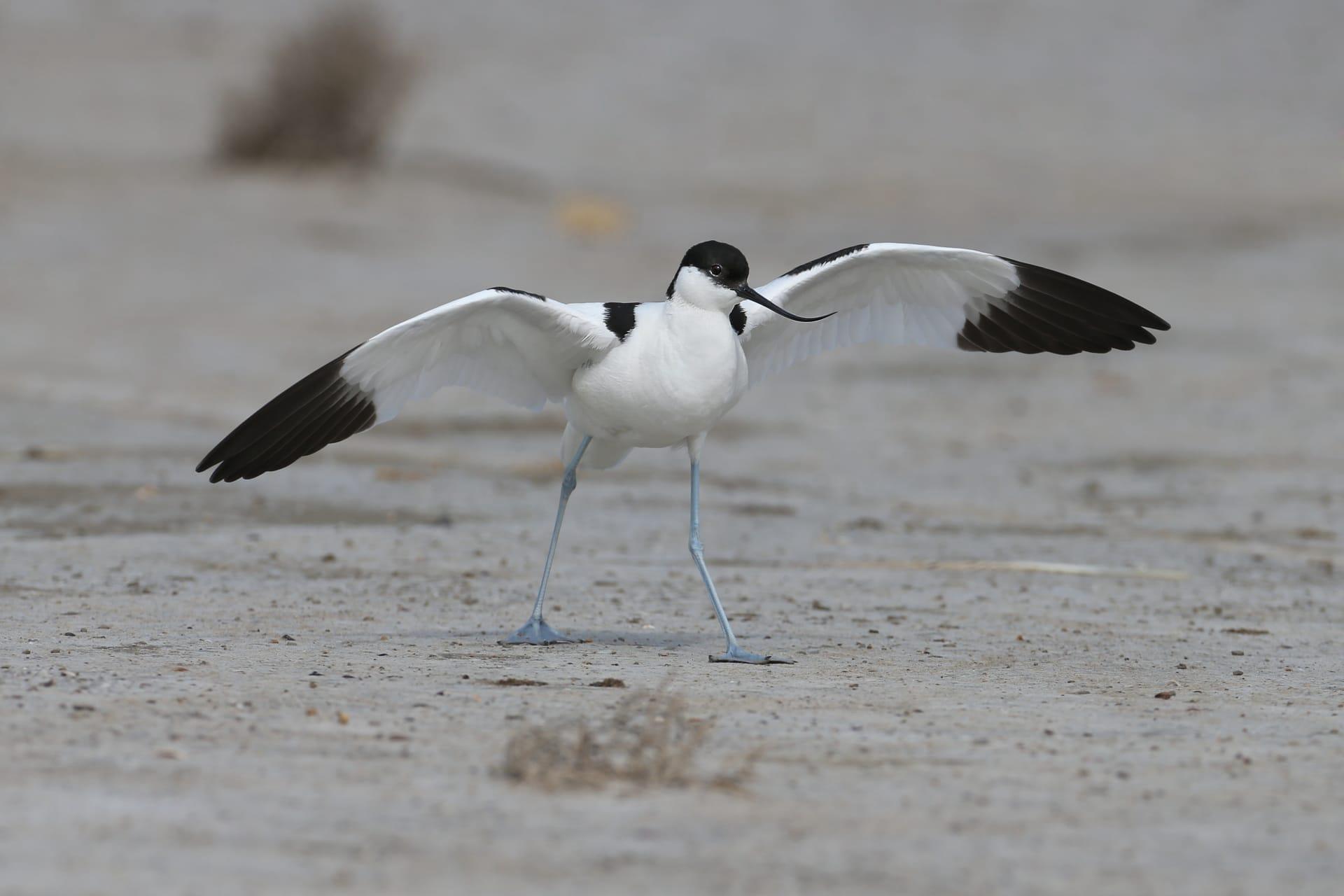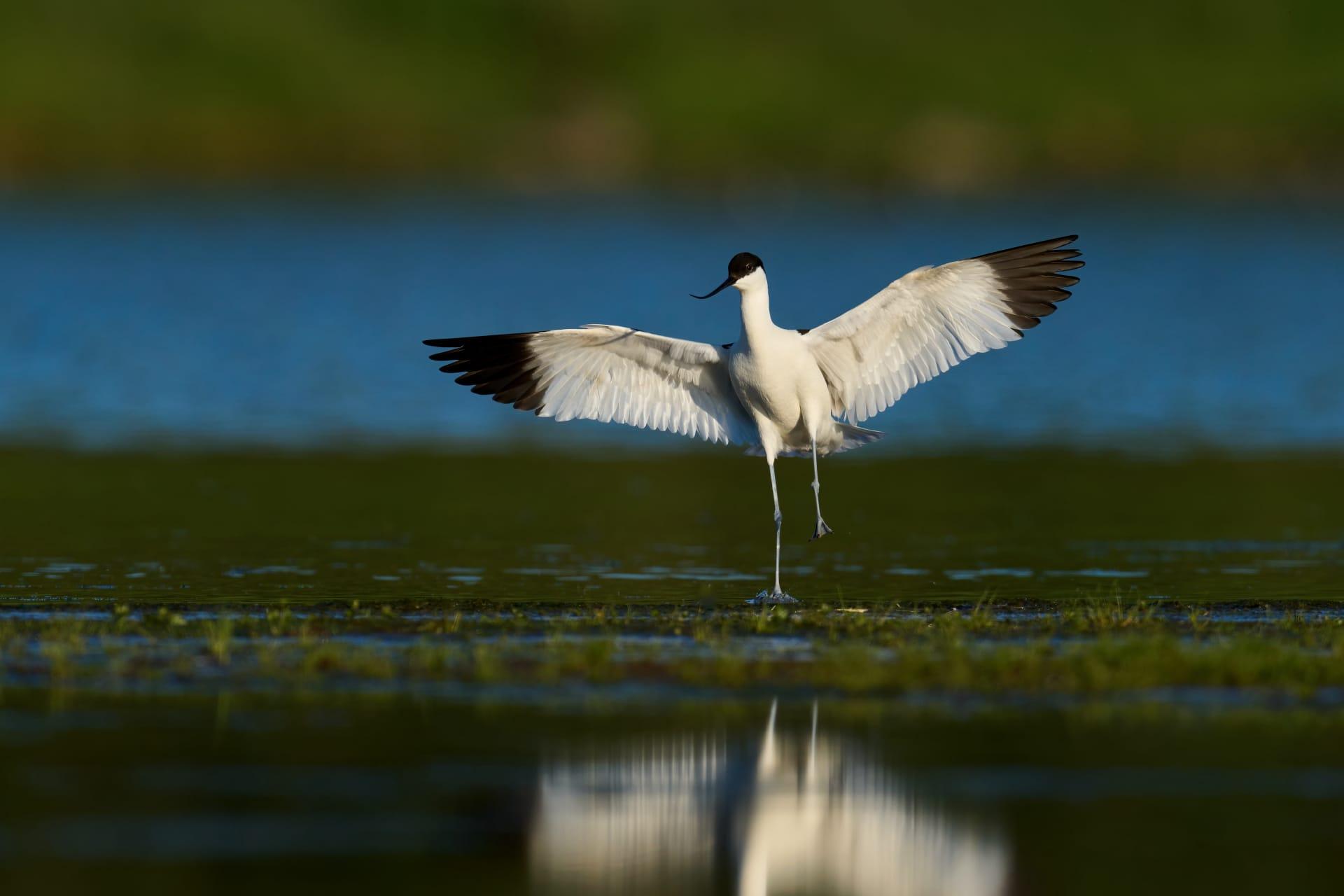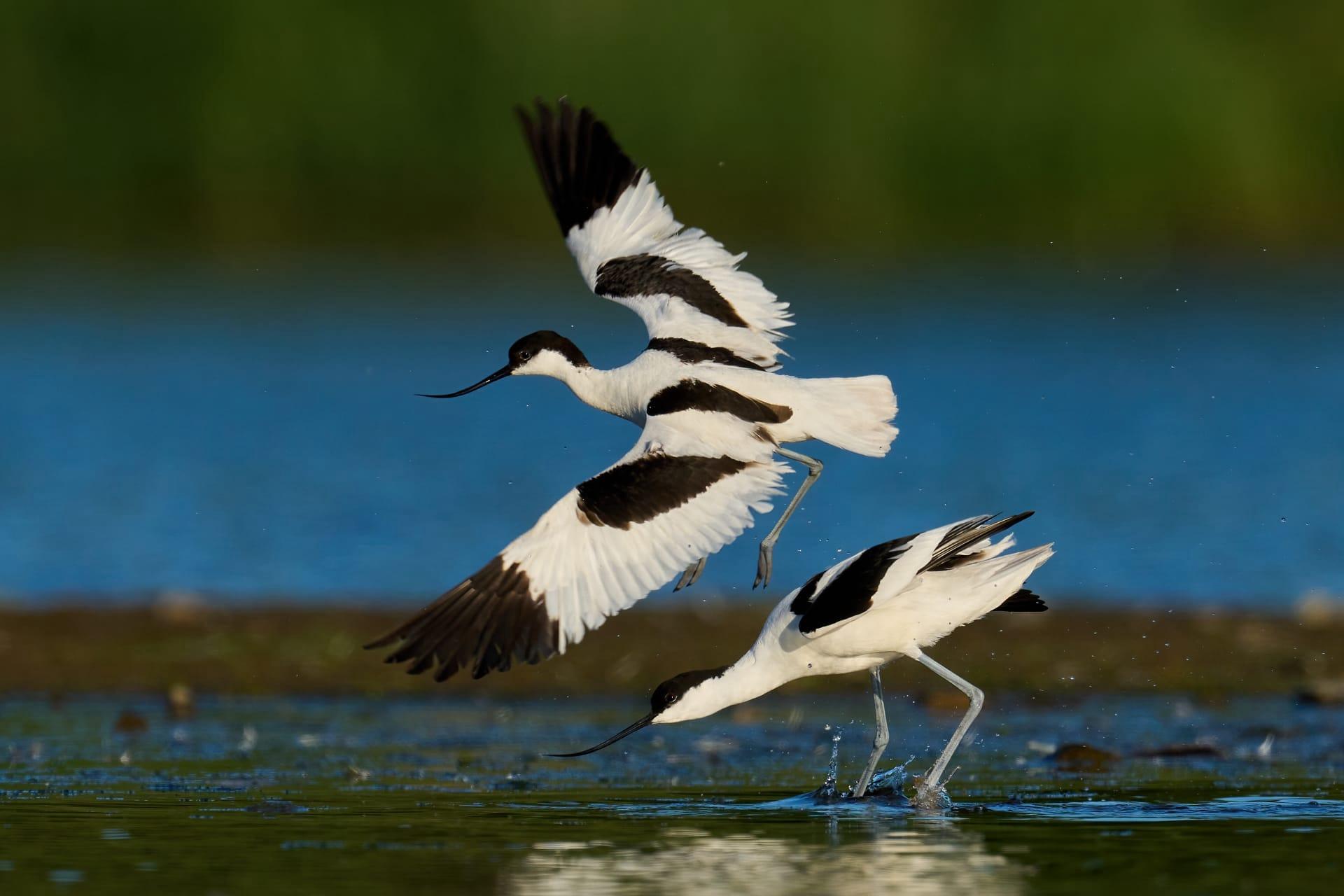1
The Avocet, a bird with a uniquely upturned bill, is a master of survival in salty environments. Their salinity tolerance is remarkable. These birds can thrive in habitats with salt concentrations far higher than that of seawater. For instance, while seawater typically has a salinity of around 35 parts per thousand (ppt), Avocets can flourish in waters with salinity levels up to 60 ppt. This adaptation is crucial for their survival in saline lakes and coastal lagoons where food is abundant but water conditions are harsh.
Another fascinating aspect of Avocets is their feeding technique. They have a specialized way of foraging called "scything," where they sweep their upturned bill side to side just below the water's surface. This unique motion helps them catch small crustaceans and insects. What's remarkable is the speed and precision of this action. Studies have shown that an Avocet can sweep its bill through the water at speeds up to 5 times per second, making it one of the fastest foraging movements observed in wading birds.

2
Avocets exhibit a striking change in color during breeding season. Outside of this period, they have a primarily white and light grey plumage. However, during the breeding season, their head and neck feathers transform to a rich, cinnamon-brown shade. This seasonal transformation is not just a visual spectacle but also plays a crucial role in their mating rituals. The brighter plumage is believed to make them more attractive to potential mates.
Another captivating trait is their cooperative breeding behavior. Avocets are known for forming breeding colonies, sometimes comprising hundreds of pairs. Within these colonies, they engage in a practice known as "egg dumping," where a female may lay her eggs in the nest of another pair. Surprisingly, the host pair often incubates these extra eggs along with their own, showcasing a unique aspect of communal care and cooperation within the species.

3
Avocets are highly social birds, especially outside the breeding season. They form large flocks, often numbering in the thousands, which provides safety in numbers against predators. This flocking behavior is particularly evident during migration when they travel long distances together. The sight of these large flocks, synchronously wheeling and turning in the air, is a mesmerizing natural spectacle.
In terms of vocal communication, Avocets are quite vocal and have a variety of calls used for different purposes. Their calls range from simple 'chip' notes to more complex series of notes for alarm or aggression. During the breeding season, their calls become even more varied and frequent. Intriguingly, research suggests that Avocets can recognize the individual calls of their mates and offspring, which is crucial for maintaining bonds and coordination within the flock.

4
Avocets have a unique approach to nest building. They typically nest in open areas, often on bare ground. Their nests are simple scrapes in the soil, sometimes lined with bits of vegetation or small stones. What's interesting is that during times of flooding, Avocets will continually build up their nests to keep the eggs above water. This adaptation showcases their resilience and resourcefulness in ensuring the survival of their offspring in challenging environments.
Another aspect of their behavior that stands out is their defensive strategy against predators. When a predator approaches, Avocets engage in a group mobbing behavior. They fly around the intruder, calling loudly and sometimes diving at it. This group defense tactic is effective in deterring many potential threats, showcasing their strong social cohesion and collective approach to survival.

5
The Avocet's upturned bill is not just unique in shape but also in function. It is highly sensitive, allowing them to detect prey by touch in murky waters where visibility is low. This tactile feeding strategy is particularly effective in muddy or silty environments where they feed on small aquatic invertebrates. The sensitivity of their bill is so refined that they can detect and capture prey as small as a single brine shrimp.
Avocets also play a significant role in their ecosystems as indicators of environmental health. Due to their reliance on wetland habitats, changes in Avocet populations can signal alterations in wetland conditions. This makes them valuable for conservationists and ecologists in monitoring wetland health and biodiversity. For example, a decline in Avocet numbers could indicate issues like habitat loss, water pollution, or climate change impacts, prompting further investigation and conservation efforts.